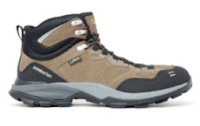Right now, we are in a global pandemic that has caused a drastic shift in how we live our lives. Probably the most impactful of these changes has been the move from in-person learning to a virtual environment. While there is a laundry list of negatives (rightfully so) that comes with virtual learning, I generally am not as pessimistic about it as some. However, this temporary paradigm shift in education has gotten me to think about what it means to learn. What I am starting to appreciate the fact that understanding stems from experience. I'll explain what I mean with an analogy:
Let's say I have never been on a roller coaster before (Disclaimer: of course I have, this is a hypothetical!). Being curious about roller coasters, I may want to pick up some information about them. I may grab a book or do a quick web search. Maybe I find a description of a particular roller coaster that goes like this:
Leaving the station, the train makes a nearly 180 degree right turn. The train then ascends the lift hill, reaching a height of 235 ft (72 m). Ascent slows toward the top of the hill, a safety feature that reduces stress on the chain; it is also an attempt to reduce positive g-forces and increases rider anticipation. The train begins accelerating down the initial 255 ft (78 m) drop, into an underground tunnel, reaching a speed of 85 miles per hour (137 km/h). Upon exiting the tunnel, the train heads upwards into a banked right turn that towers above Twisted Colossus. After completing the turn, the train heads down another drop, flattening out to pass by the onride camera. An airtime hill and banked left turn (rather than a helix on "Titan") follows into the mid-course brake run. The train is decelerated quickly and makes a hard left turn out of the brake section. Another 180 degree banked turn directs the train into a 585 degree, descending helix. Then, the track turns upwards and banks left. After an ascending right turn, the train reaches the final brake run.
-Wikipedia "Goliath (Six Flags Great America)
Oooookay did not see that one coming. That looks even more intense than I imagined. Is that nearly straight down, vertical drop? Is that even safe? Suddenly the description of the ride, the 85 mph speed is starting to make sense. This picture has given me more information to build my mental image. Is it as intense as I believe it is? Curious, I may try to find a video to see what the ride is really like:
So that looks like a ton of fun! At this point, the next option for me at this point is to Six Flag Great America to try out Goliath in person. Standing in line, I can feel the anticipation begin to build as I get closer and closer to the start. Buckling in, my nerves start to rev up as the train leaves the station. As we climb higher and higher towards the drop, the 235 feet of elevation feels very, very real. The G-force felt from the 85 mph speeds gives a thrill that is impossible to recreate through any book or video. In riding this ride, the abstract has become concrete. What I'm left with is an experience I'll never forget.
What does this mean for environmental education? The abstract can only get us so far. We can read to our students about stream ecology, teaching them about the food web, or explain how rocks form. However, it's another thing to go out and do experience those things with them. A student's reaction to sticking their toes in a running brook may be infinitely more valuable than the hours spent behind a book. I'm not sure how to calculate that value. Is there an ideal balance between teaching the abstract and the concrete? Although I have been an environmental educator for nearly a decade, I am beginning to realize that I still have decades more to learn. If you want to take this journey with me, strap in. It's going to be a wild ride!
.jpg)













